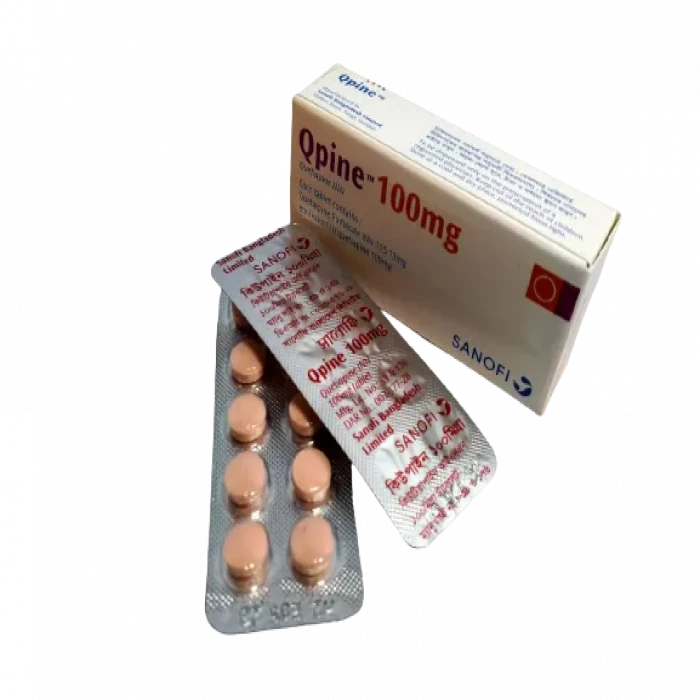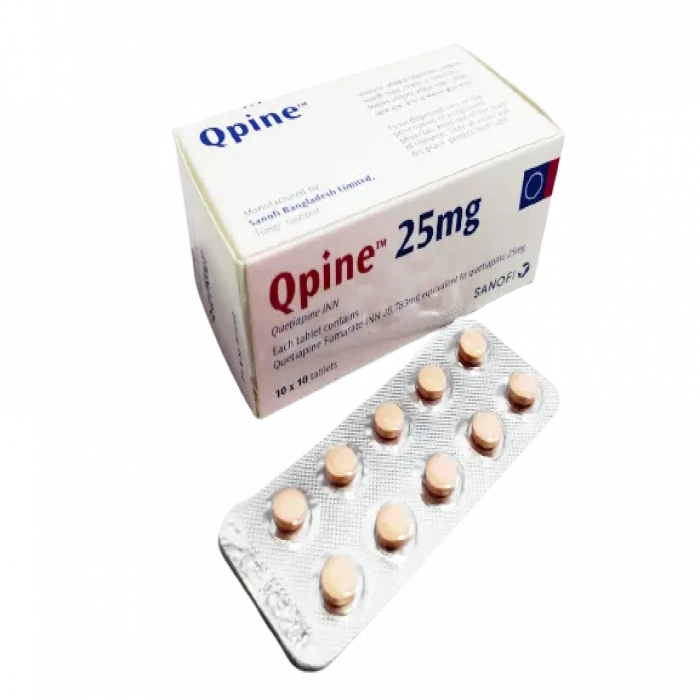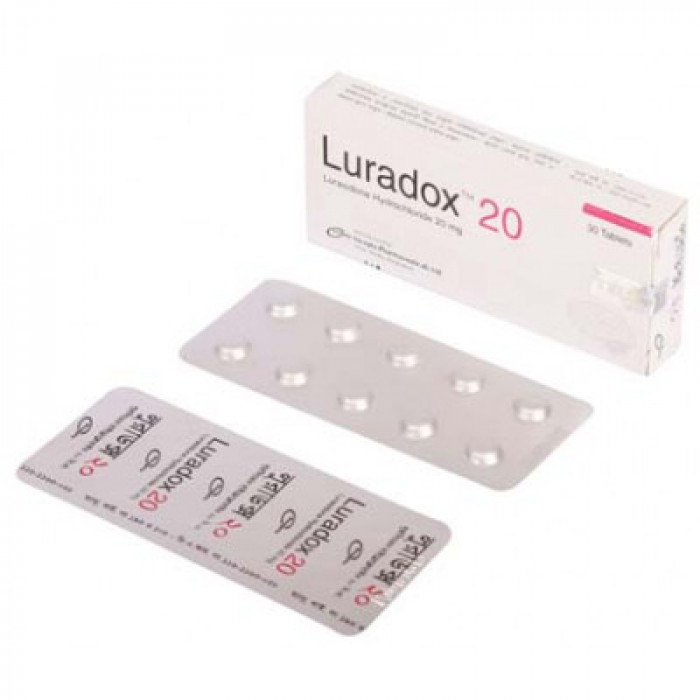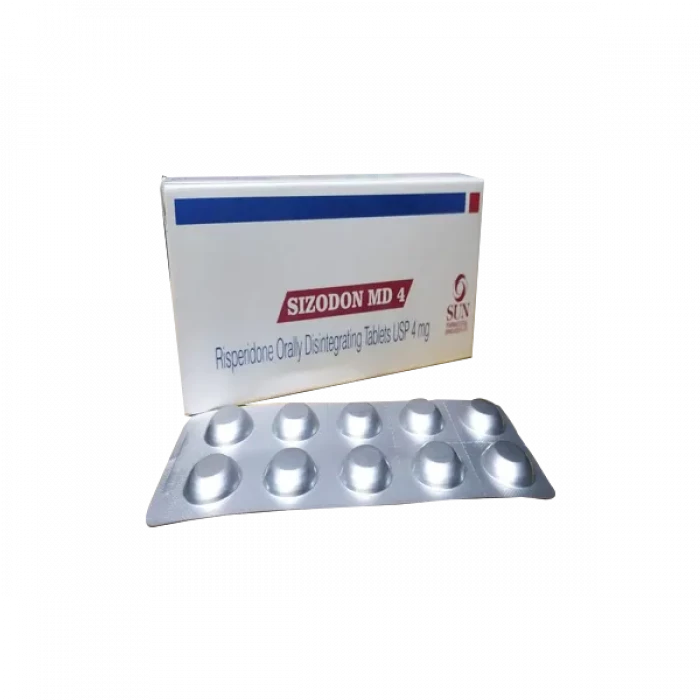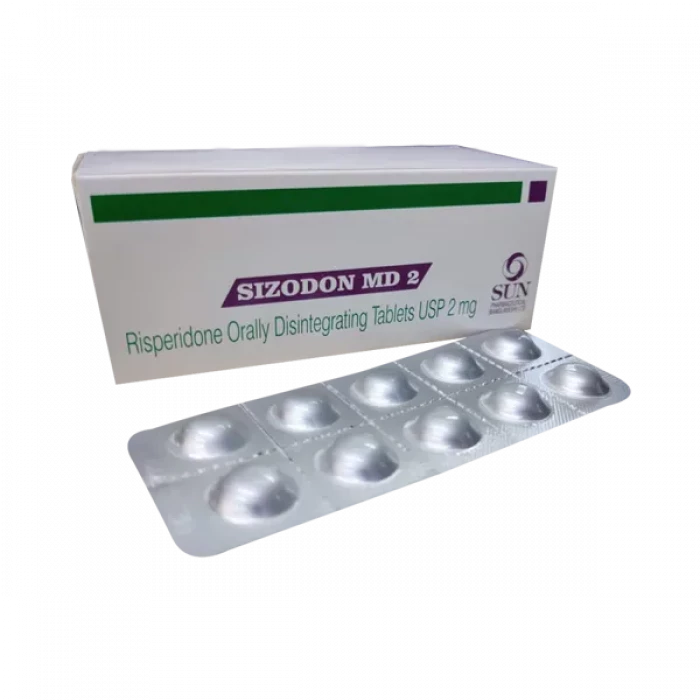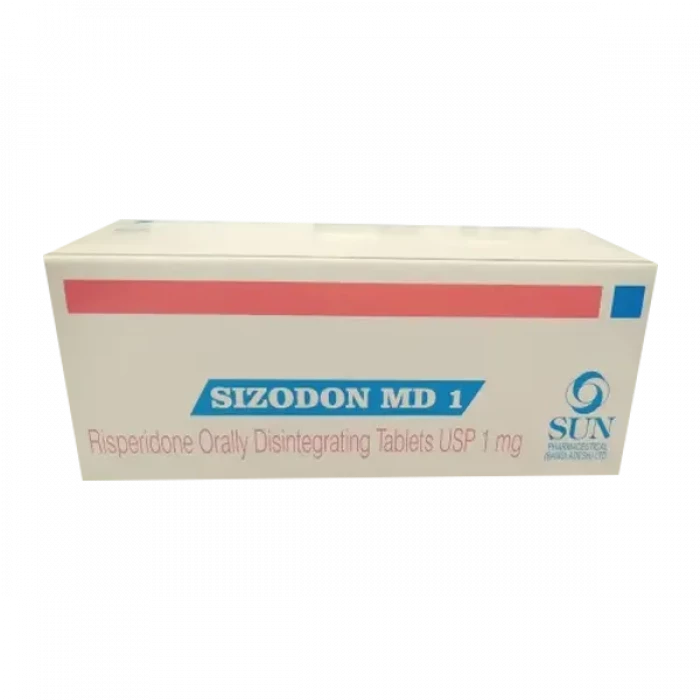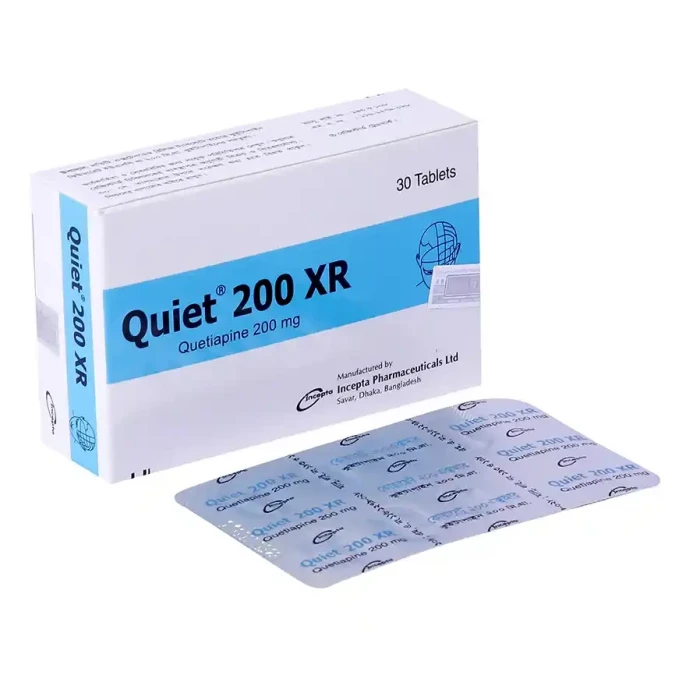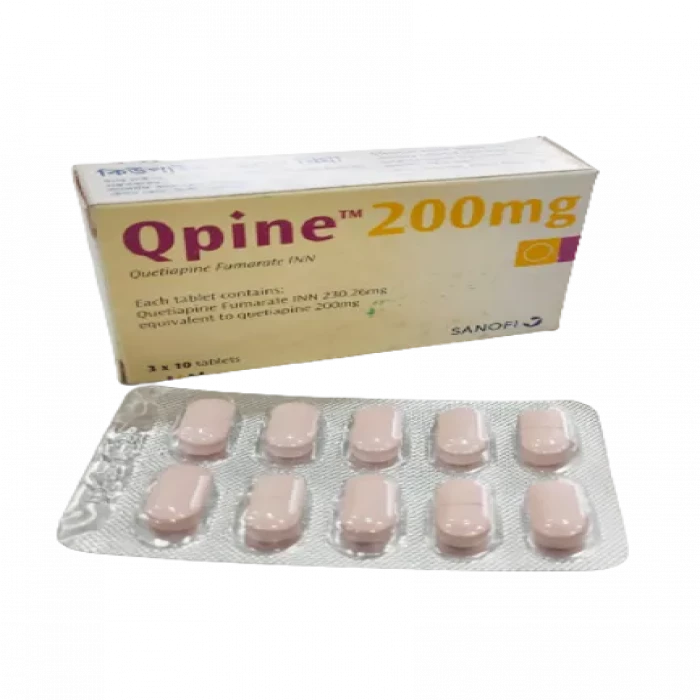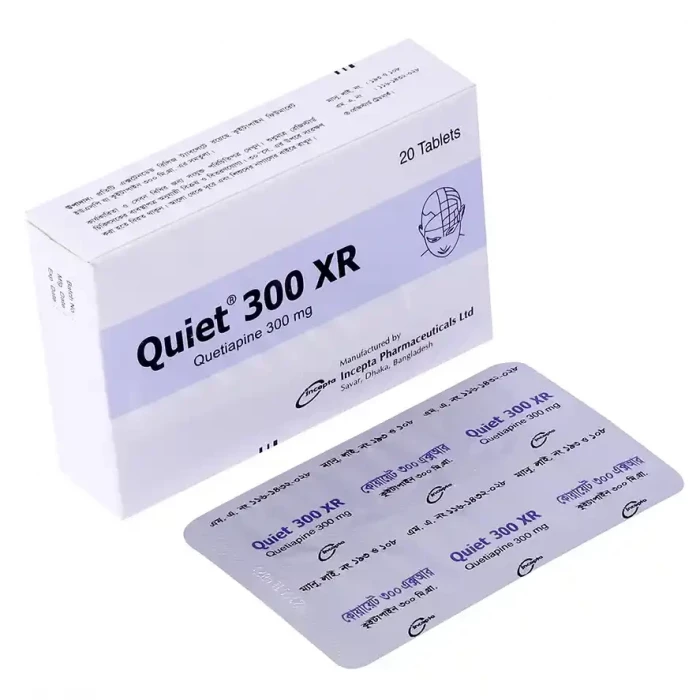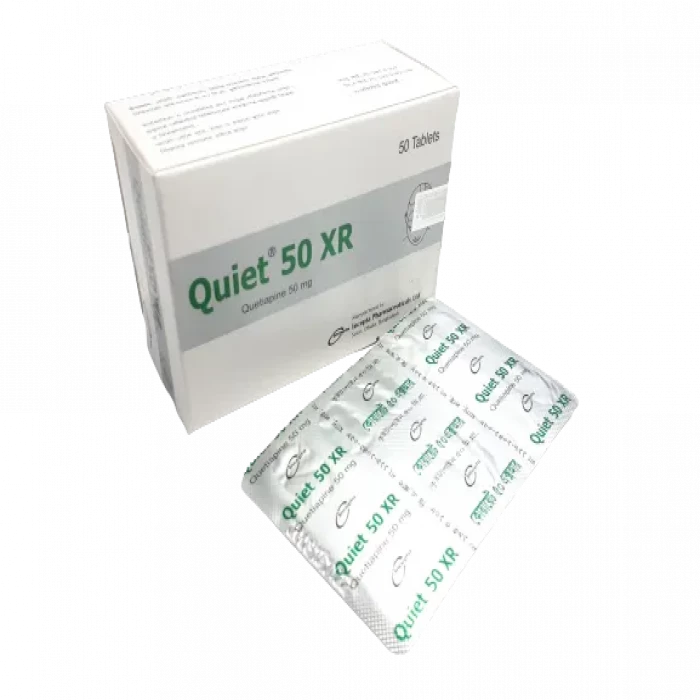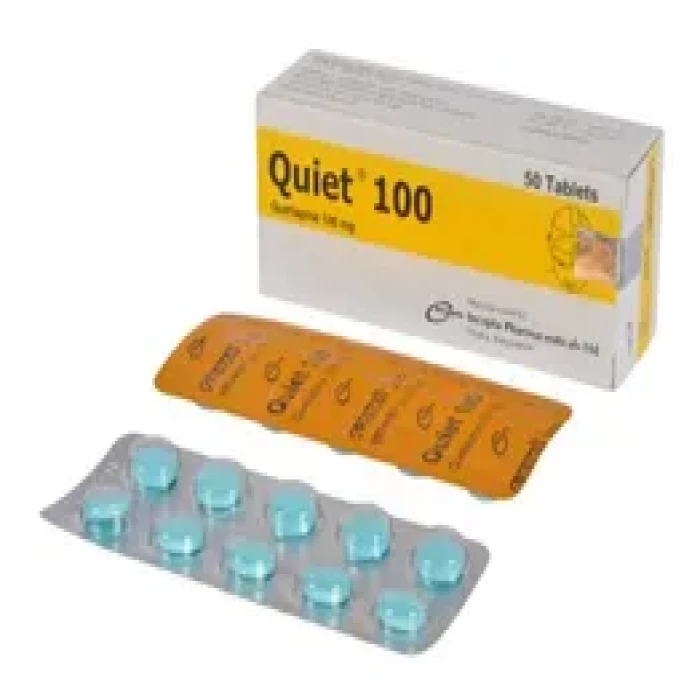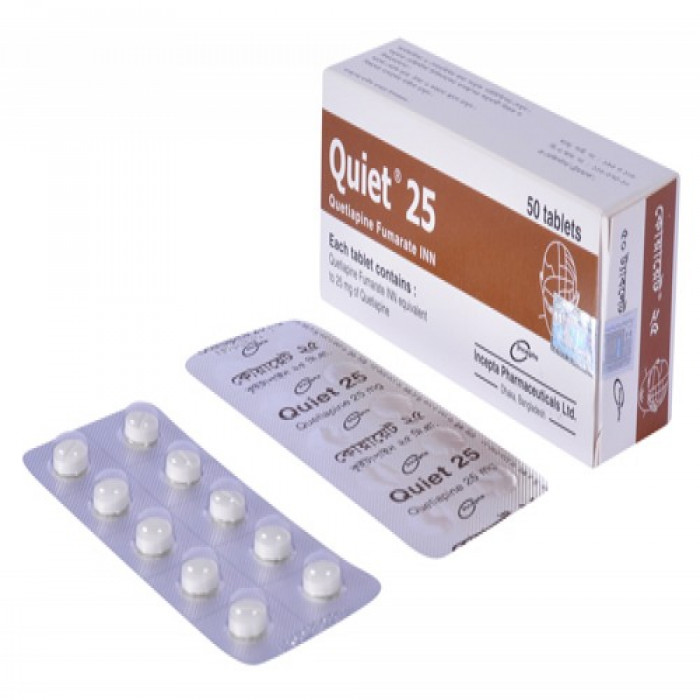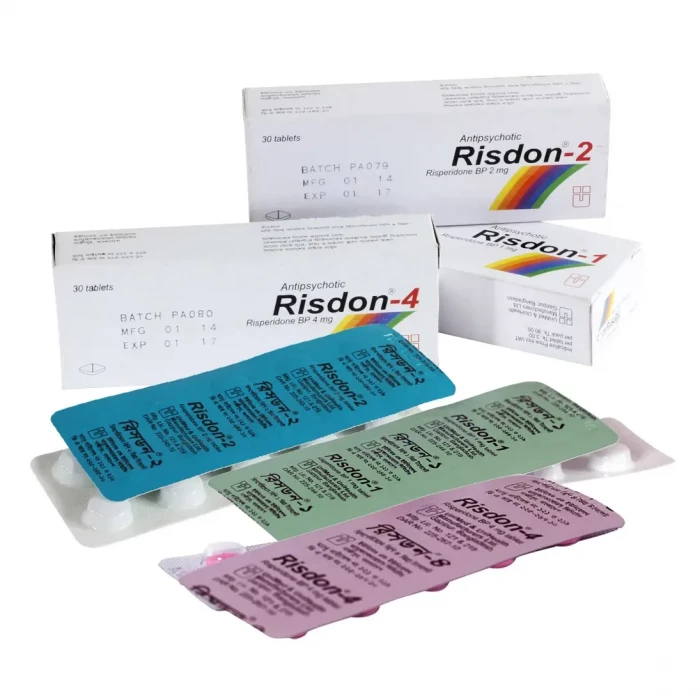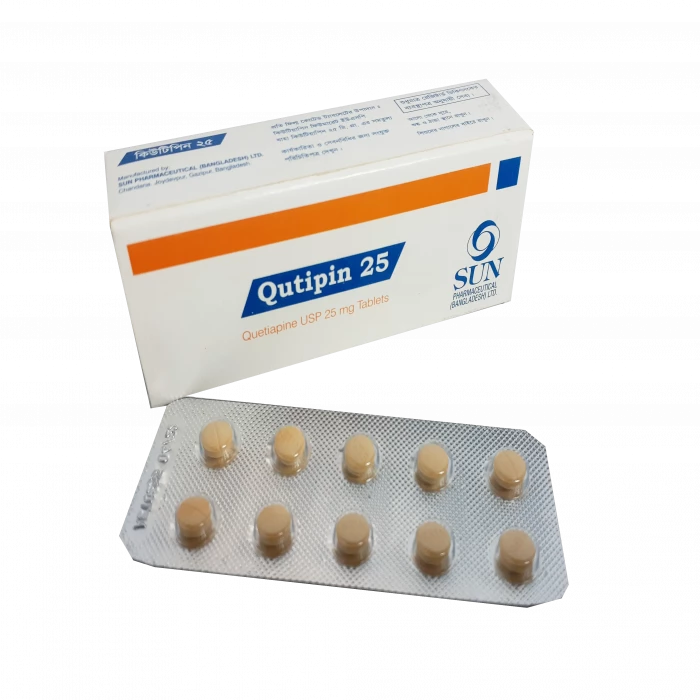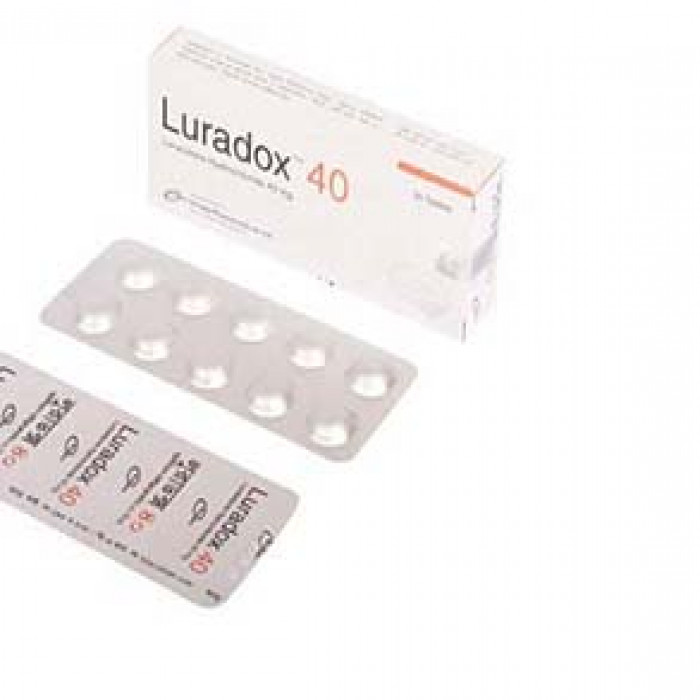
✔ 100% Authentic Product
👁️ Currently Viewing 441
Luradox 40mg Tablet 1 Strip
Luradox is used in the treatment of:
- Schizophrenia
- Depressive episodes associated with Bipolar I Disorder

100% Genuine Products, Guaranteed
Safe & Secure Payments, Always
Fast, Secure & Efficient Delivery
Proper Packaging
 Cash on Delivery - All over Bangladesh
Cash on Delivery - All over Bangladesh Regular Delivery - 8-12 Hours, Dhaka City*
Regular Delivery - 8-12 Hours, Dhaka City* Regular Delivery - 24-48 Hours, All Over Bangladesh*
Regular Delivery - 24-48 Hours, All Over Bangladesh* ফ্রি ডেলিভারি! - ১৪৯৯ টাকা+ অর্ডারে ঢাকা
শহরে ।
ফ্রি ডেলিভারি! - ১৪৯৯ টাকা+ অর্ডারে ঢাকা
শহরে । ফ্রি ডেলিভারি! - ২৯৯৯ টাকা+ অর্ডারে ঢাকার
বাহিরে ।
ফ্রি ডেলিভারি! - ২৯৯৯ টাকা+ অর্ডারে ঢাকার
বাহিরে ।
✅ Description:
Although the precise mechanism by which Lurasidone exerts its effects in schizophrenia and bipolar depression is not fully known, its clinical benefit is thought to involve antagonism of central dopamine D2 and serotonin 5-HT2A receptors.
✔️ Dosage and Administration
Luradox must be taken with food containing at least 350 calories, as this significantly enhances its absorption.
✔️ For Schizophrenia:
Starting dose: 40 mg once daily.
No initial titration is necessary.
Maximum recommended dose: 160 mg daily.
✔️ For Bipolar Depression (Bipolar I Disorder):
Starting dose: 20 mg once daily, either as monotherapy or in combination with lithium or valproate.
No initial titration is required.
Maximum recommended dose (monotherapy or adjunct): 120 mg daily.
✔️ Pediatric Use:
Safety and efficacy in children and adolescents have not been established.
✔️ Adverse Effects
Frequent side effects may include:
- Drowsiness
- Akathisia (restlessness)
- Extrapyramidal symptoms (motor control disturbances)
- Nausea
✔️ Drug Interactions
Concurrent use with potent CYP3A4 inhibitors (e.g., ketoconazole, clarithromycin, ritonavir) or strong CYP3A4 inducers (e.g., rifampin, phenytoin, carbamazepine) is not advised due to potential alteration in drug levels.
✔️ Contraindications
Lurasidone is contraindicated in individuals with known hypersensitivity to the drug or its components. It must not be used with strong CYP3A4 inhibitors or inducers
✔️ Pregnancy & Lactation
- Pregnancy Category B: Animal studies have not demonstrated fetal risk, but there are no adequate studies in pregnant women.
- Lactation: Lurasidone is present in breast milk. Due to the potential for serious harm to nursing infants, the benefits of continued treatment should be weighed against the risk, and a decision should be made to either discontinue the drug or stop breastfeeding.
✔️ Precautions
- Not approved for dementia-related psychosis; use may increase the risk of death in elderly patients.
- May elevate the risk of suicidal ideation and behavior in adolescents and young adults.
✔️ Storage:
Keep in a cool, dry place at or below 30°C. Protect from light.
Disclaimer:
ePharma sole intention is to ensure that its consumers get proper
information as musch as possible. Although we do not guarantee the
accuracy and the completeness of the information that provided and
here information is for informational purposes only.
The information contained herein should NOT be used as a substitute
for the advice of a qualified physician. This may not cover
everything about particular health conditions,
lab tests, medicines, all possible side effects, drug interactions,
warnings, alerts, etc. Please consult your healthcare professional
and discuss all your queries related to any disease or medicine. We
intend to support, not replace, the doctor-patient relationship.




